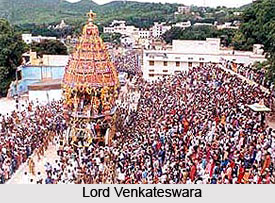 Indian art is highly introspective. Contrasting the art of many other countries of the world, Indian art is not merely confined to sculptures, paintings, music and dance. Indeed, almost every object that an Indian uses- right from the traditional vessels to the mat that one sleeps on is a piece of art work. In India, religion too is closely associated with art. In olden days, the temples patronized the artists. Even now, some of the best art objects can be seen in the temples of India.
Indian art is highly introspective. Contrasting the art of many other countries of the world, Indian art is not merely confined to sculptures, paintings, music and dance. Indeed, almost every object that an Indian uses- right from the traditional vessels to the mat that one sleeps on is a piece of art work. In India, religion too is closely associated with art. In olden days, the temples patronized the artists. Even now, some of the best art objects can be seen in the temples of India.
When you visit any large temple in India, masinly in South India, you may find a huge chariot standing in an isolated corner of the campus. This is the rahta. The term `ratha` denotes not only these temple chariots but also the carts or chariots used by ancient kings in warfare.
Ancient Tamil and Sanskrit literature furnish interesting descriptions of these chariots. In the famous war described in the epics Mahabharata, God Krishna himself acts as the charioteer for the epic hero Arjuna. To the King, the war chariot is a symbol of strength and royal authority. Often, the war chariot is adorned with colourful flags and banners featuring the emblem of the kingdom. In the temples, the chariot is used to parade the utsava-murti or the processional image of the deity through the streets of the city on festive occasions. Many temples in India celebrate the Ratha-utsava or the chariot festival. On this day, the processional deity is brought to the chariot before sunrise. The deity is bathed and adorned with flowers, silk garments and jewels before being driven in the chariot. It is believed that God sanctifies those who pull or drive the chariot.
 The temple chariot is modeled as a miniature replica of the temple itself. The chariot is mostly made of wood. Figures of gods and goddesses, geometric designs, floral scrolls and friezes of animals such as the lion and the elephant are carved on the chariot. Some of the important temples possessing beautiful chariots are the Ranganathasvami temple at Srirangam, the Varadaraja Perumal temple at kanchipuram, the Parthasarathi temple at Triplicane (Chennai city), all in Tamil nadu. Besides, the Venkateshvara temple at Tirumala (Andhra Pradesh) also has a pretty chariot.
The temple chariot is modeled as a miniature replica of the temple itself. The chariot is mostly made of wood. Figures of gods and goddesses, geometric designs, floral scrolls and friezes of animals such as the lion and the elephant are carved on the chariot. Some of the important temples possessing beautiful chariots are the Ranganathasvami temple at Srirangam, the Varadaraja Perumal temple at kanchipuram, the Parthasarathi temple at Triplicane (Chennai city), all in Tamil nadu. Besides, the Venkateshvara temple at Tirumala (Andhra Pradesh) also has a pretty chariot.
When not in use, the chariot is usually kept in a hall or pavilion within or close to the temple. This pavilion is called ratha mandapa. Rarely, some of the halls or mandapas in the temples were built with huge stone wheels to resemble a chariot. Such chariot-shaped mandapas are seen in some of the temples of Imperial Chola and Vijayanagar times (9th to 16th centuries AD)In these days of nuclear warfare, war chariots are no longer in use. But temple chariots are still being made in certain parts of India. The artisans not only make new chariots for new chariots for new temples but also repair and renovate the old chariots.











